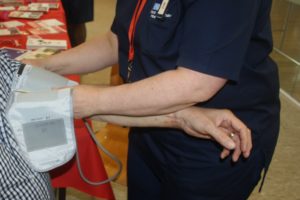 The proportion of people experiencing heart disease and stroke who have five or more other health conditions quadrupled between 2000 and 2014, and the rise was not driven by age, according to new research funded by the NIHR Oxford BRC.
The proportion of people experiencing heart disease and stroke who have five or more other health conditions quadrupled between 2000 and 2014, and the rise was not driven by age, according to new research funded by the NIHR Oxford BRC.
The study by The George Institute for Global Health at the University of Oxford could have significant implications for the way healthcare is provided.
It analysed data on over four million people in the UK and found that, while the proportion being diagnosed with heart disease and stroke fell by 34% during this period, among those who were diagnosed, the proportion of people with five or more other health conditions rose from 6.3% to 24.3%, after adjusting for age.
Older patients, women and less affluent groups were affected by the highest numbers of conditions, and the most common conditions were high blood pressure (experienced by 28.9% of patients), depression (23.0%), arthritis (20.9%), asthma (17.7%) and anxiety (15.0%).
“This rise in the number of health conditions experienced might be linked to changes in environmental or lifestyle factors, such as smoking, physical inactivity and diet, which we know contribute to the development of chronic illness,” said Dr Jenny Tran, who led the study.
“It might also be related to higher survival rates from heart disease and stroke; better diagnosis, improved medical technologies and more accessible healthcare; and increased awareness on the part of patients, which leads them to seek help for these conditions.”
The number and type of health conditions experienced varies with gender, age and socio-economic status.
Women
Among women, for example, 19.1% of those diagnosed with heart disease and stroke have five or more other health conditions, compared with 12.5% of men, and the proportion of women experiencing depression and anxiety is double that of men.
This may reflect greater health awareness among women, or an under-reporting of some conditions among men.
Among younger patients (aged 30-59), mental illnesses such as depression are very common, while older patients (aged over 40) are more likely to experience high blood pressure and arthritis.
The study also found that less affluent patients tend to experience a greater number of ailments; 19.9% of people diagnosed with heart disease and stroke in the most deprived groups have five or more additional conditions, compared with 12.0% in the least deprived groups.
Complex
Four out of ten of the other major conditions being experienced – anxiety, arthritis, asthma and depression – are not related to the heart or metabolism, suggesting that clinical care for patients is becoming increasingly complex.
“The current ‘single-disease’ model of treating patients with heart disease and stroke does not take into account the other conditions they may be experiencing,” said Professor Kazem Rahimi, Deputy Director of The George Institute at Oxford.
“This study highlights the urgent need for a shift to more integrated models of healthcare and better guidelines to address the management of multiple conditions, which our research suggests may need to be tailored to different groups according to age, gender and income.”
Philip Bell, 73, has atrial fibrillation, osteoarthritis, type 2 diabetes, an enlarged prostate, sleep apnoea and hearing loss. He takes eight different medications a day, and visits different healthcare professionals for each condition, often in locations that are many miles apart.
“Fortunately I can still drive,” Bell said. “I live in a rural area, and it would make life extremely difficult if I had to resort to public transport.”
Planning
 Professor Richard Hobbs (right), Theme Lead for Multi-Morbidity and Long-Term Conditions at the NIHR Oxford BRC, which funded the study, said the findings highlighted the need for the growing burden of multiple diseases to be taken into account in both research and health systems planning.
Professor Richard Hobbs (right), Theme Lead for Multi-Morbidity and Long-Term Conditions at the NIHR Oxford BRC, which funded the study, said the findings highlighted the need for the growing burden of multiple diseases to be taken into account in both research and health systems planning.
“Patients who suffer from a number of different health conditions have higher hospital admission rates, more complications, and longer stays in hospital, so this striking rise in the proportion of people experiencing a high number of ailments has important implications for health policy and healthcare provision,” said Professor Hobbs, who is also Head of the Nuffield Department of Primary Care Health Sciences at the University of Oxford.